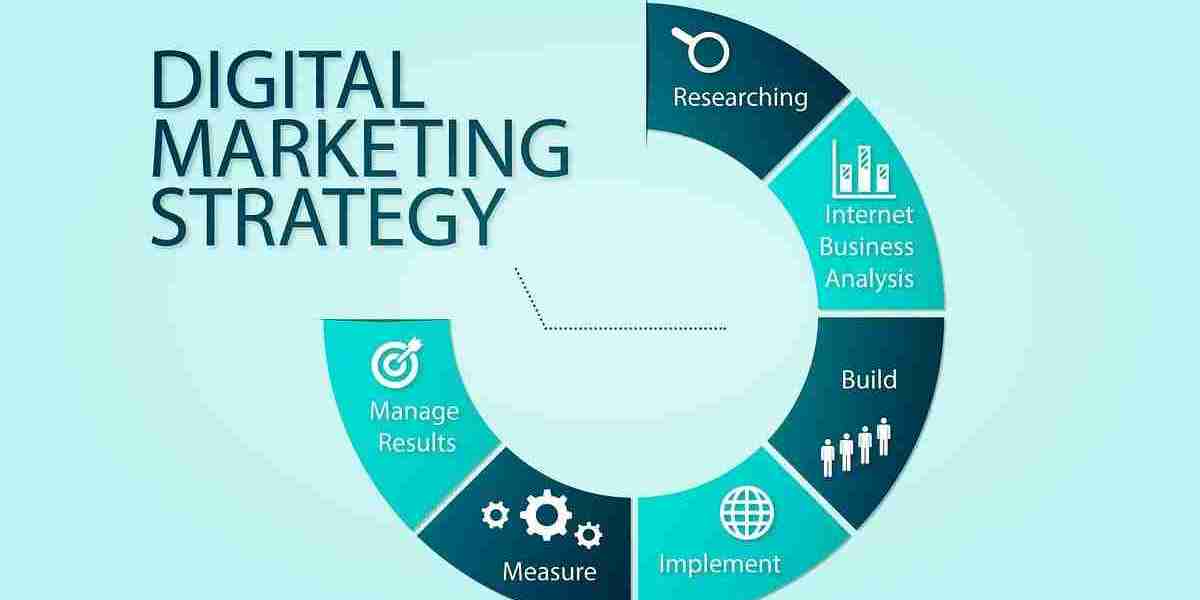Ready to get your brand noticed online? A killer digital marketing strategy is your secret weapon. It’s not just about being online it's about being unforgettable. Whether you're an IT company or a solo brand-builder, your strategy needs to work on both Google and social media to make a real impact.
Understanding Your Audience
Creating Buyer Personas
Before you do anything else, know your people. Who are they? What keeps them up at night? Create detailed buyer personas that represent your ideal customers. Include age, job role, pain points, goals, and even what platforms they use most.
Mapping the Customer Journey
Think like your customer. From first touch to final conversion, what path do they take? Map out each step so you can offer value at every stage from awareness to action.
Setting Clear Marketing Goals
Aligning Goals with Business Objectives
Your marketing should serve your business, not the other way around. Tie every digital marketing effort back to a bigger goal brand awareness, lead generation, or customer retention.
Setting SMART Goals for Success
Keep your goals SMART Specific, Measurable, Achievable, Relevant, and Time-bound. “Get more traffic” isn’t enough. Try, “Increase organic traffic by 30% in 3 months.”
Analyzing Your Current Digital Presence
SEO Audit and Website Analysis
Your website is your home base. Run a full SEO audit to find what’s working and what’s dragging you down. Check load speed, broken links, and mobile usability.
Social Media Audit
Take a good look at your current profiles. What posts get the most love? Which platforms give the highest engagement? Use that data to fine-tune your efforts.
Competitor Research
Identifying Top Competitors
Look at who's already killing it in your niche. These are your benchmarks. Analyze their keywords, content, and ad strategies.
Learning from Their Strategies
Don’t copy learn. Spot gaps you can fill or tactics you can improve. Use tools like SEMrush or Ahrefs to dig deep into their game plan.
Building a Strong SEO Foundation
Keyword Research Essentials
Start with keywords that matter. Use long-tail keywords that match user intent. Think: “digital marketing for IT companies” instead of just “marketing.”
On-Page SEO Best Practices
Use proper headers, short URLs, and image alt tags. Place keywords naturally don’t force it. Include internal links to keep users clicking.
Technical SEO Tips
Make your site crawlable and fast. Fix any 404 errors. Submit your sitemap to Google Search Console and keep things mobile-first.
Backlink Building Tactics
Get other sites to vouch for you. Publish guest posts, create sharable infographics, or get listed in industry directories. High-quality backlinks boost credibility.
Creating a Killer Content Strategy
Blogging with Purpose
Blogs are your SEO fuel. Answer common questions, solve problems, and build trust. Post consistently and update old content regularly.
Video and Visual Content
Videos boost time on site and conversions. Mix in reels, explainers, and behind-the-scenes content. Don’t forget infographics they’re gold for shares.
Content Distribution Channels
Don’t post and pray. Share your content through newsletters, Reddit, Quora, and LinkedIn groups. More eyes more value.
Crafting a Winning Social Media Plan
Choosing the Right Platforms
Be where your audience is. If you're targeting professionals, LinkedIn rules. For visual content? Instagram and TikTok are your go-tos.
Scheduling and Automation Tools
Use tools like Buffer or Hootsuite to save time. Schedule your posts in advance and keep a consistent flow of content going.
Engaging with Your Audience
Reply to comments. Slide into DMs. Create polls, Q&As, and lives. Social media is about conversation, not broadcasting.
Digital Marketing for IT Companies
Tailoring Content to the Tech Audience
Tech buyers aren’t easy to impress. Focus on data-driven content, case studies, and in-depth blogs. Show off your expertise without the fluff.
Positioning as a Thought Leader
Write white papers. Host webinars. Publish on Medium or industry-specific sites. Thought leadership builds trust like nothing else.
Email Marketing & Lead Nurturing
Building Your Email List
Offer a freebie digital marketing strategyan eBook, checklist, or webinar. Capture those emails with well-placed CTAs and pop-ups that don’t annoy.
Personalization and Segmentation
Not every email fits all. Segment your list by behavior, interest, and stage in the funnel. Speak directly to their needs.
Running a High-Converting Digital Marketing Campaign
Planning Your Campaign
Every campaign needs a hook, an audience, and a goal. Map out your message, visuals, and delivery methods.
Measuring Results and ROI
Track clicks, conversions, and cost-per-lead. Use tools like Google Analytics and HubSpot to see what’s really working.
Embracing Paid Advertising
Google Ads Strategy
Focus on high-intent keywords. Create tight ad groups. Write clear, punchy ad copy and use strong CTAs.
Social Media Advertising
Boost posts with high engagement. Run retargeting ads for warm leads. A/B test creatives to keep performance high.
Measuring and Improving Your Strategy
Key Metrics to Track
Keep an eye on bounce rates, session duration, CPC, CTR, and conversion rates. These numbers tell your story.
Tools for Analytics and Reporting
Use Google Analytics, SEMrush, and Meta Business Suite. Track everything and tweak your strategy monthly.
Common Mistakes to Avoid
Ignoring Mobile Optimization
Over 60% of traffic comes from phones. A slow, clunky mobile site is a dealbreaker. Optimize everything for mobile-first.
Inconsistent Branding
Your voice, visuals, and message should align everywhere. Confused branding confuses customers and confused people don’t buy.
Future Trends in Digital Marketing
AI and Automation
Use AI tools like ChatGPT for content ideas and automation platforms to streamline repetitive tasks. Work smarter, not harder.
Voice Search Optimization
More people are talking to devices. Use conversational keywords and FAQs to show up in voice results.
Conclusion
Building a digital marketing strategy that dominates Google and social media isn’t just about doing more it’s about doing it smarter. Know your audience, create amazing content, and never stop testing and tweaking. Whether you're running a digital marketing campaign for a startup or scaling digital marketing for IT companies, these steps will guide you toward success.
FAQs
1. What’s the best platform for a digital marketing campaign?
It depends on your audience. LinkedIn is great for B2B, while Instagram and TikTok work well for B2C brands.
2. How often should I update my digital marketing strategy?
Review it quarterly. Trends change fast, and your strategy should evolve with them.
3. Can digital marketing for IT companies work for startups?
Absolutely. Focus on niche targeting, thought leadership, and strong technical content.
4. What are the most important SEO factors in 2025?
User intent, Core Web Vitals, mobile usability, and quality backlinks still reign supreme.
5. How do I combine SEO and social media effectively?
Use social platforms to amplify your SEO content. More shares mean more backlinks and better visibility.








